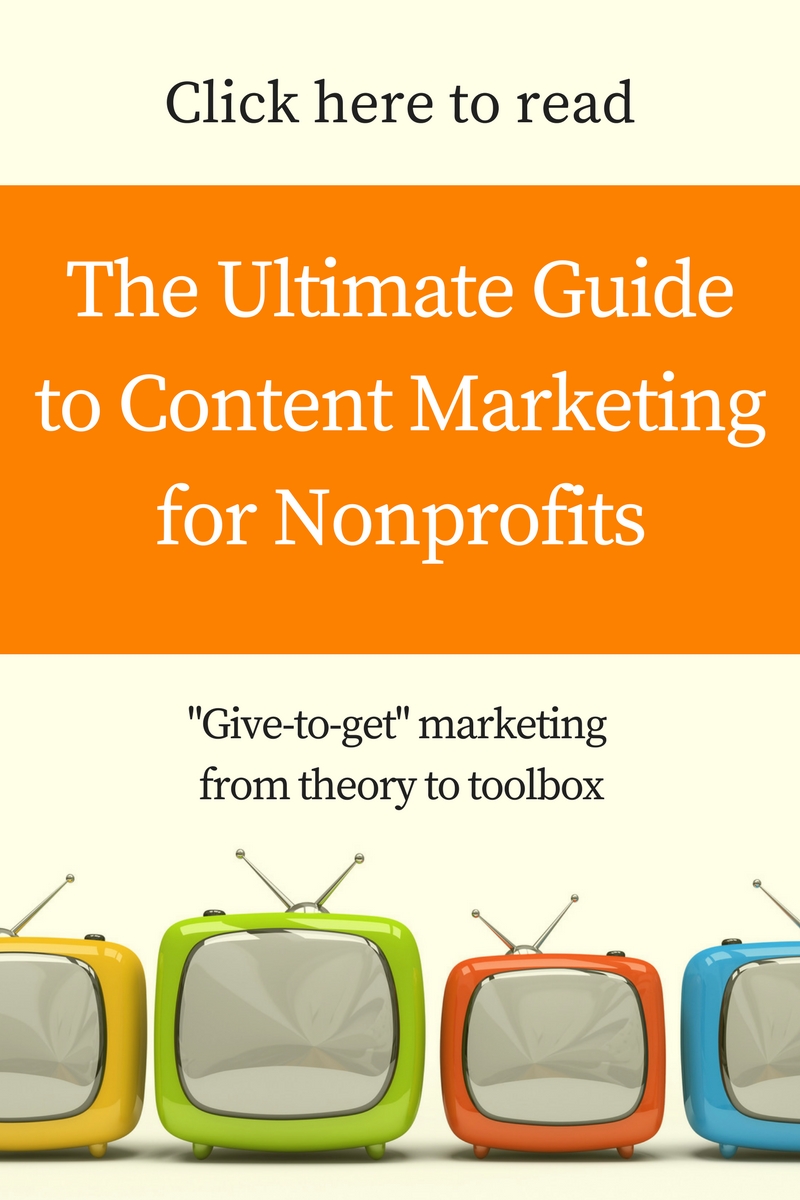As more B2B companies embrace content marketing, they are discovering that it’s easy to get lost in a cacophony of content noise. They know they need to rise above it with “thought leadership,” but that term is in danger of turning into a cliche without any meaning. What is B2B thought leadership content supposed to look like anyway? And just how many leading thoughts can a brand reasonably expect to produce?
When done well, thought leadership content is distinctive, authoritative and provocative, providing insights and exploring new terrain. It’s the kind of information people in your industry are eager to consume — and to share.
Real thought leadership content makes the reader perk up and think, “Who are these people?” It makes them say to their colleagues, “We ought to reach out to these guys and see what they’re about.”
You know you have standout thought leadership content when it doesn’t require a lead gen form. The content makes customers call you.
Some of the ways to achieve this level of thought leadership will include new formats and distribution mechanisms. But even the most familiar blog format can hit high quality if they strive for other characteristics — authoritative and original information or insight.
Let’s take a look at some truly outstanding examples of thought leadership content.
[Updated March 2018 from an earlier version with 6 outstanding examples.]
Philips’ Future Health Index
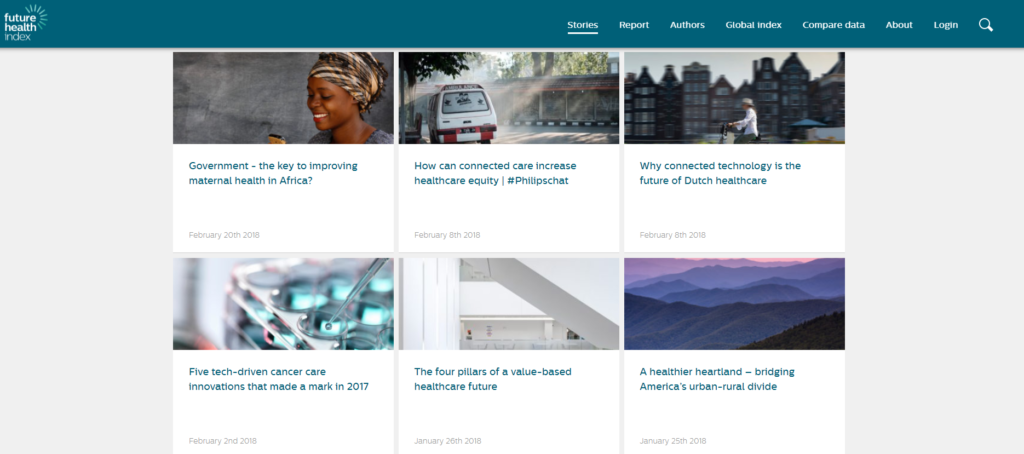 Philips, the Amsterdam-based company that American readers may associate with home electronics is using a terrific microsite and report to position itself as an advanced health technology company that can leverage comprehensive data to create better health outcomes and business solutions.
Philips, the Amsterdam-based company that American readers may associate with home electronics is using a terrific microsite and report to position itself as an advanced health technology company that can leverage comprehensive data to create better health outcomes and business solutions.
Their Future Health Index pulled together a brain trust of advisers and investigators to envision the low-cost, high-impact healthcare system of the future. Innovative projects are presented alongside the challenges of actual user experience in clinical settings around the world.
This microsite is also a great example of presenting the work in a variety of forms, from narrative-style feature reporting to data sets presented in highly shareable slides.
L2’s Scott Galloway on YouTube
 If you’re not already familiar with L2, you’re missing a treat. The member-based business intelligence firm covers 11 industry sectors globally, benchmarking the digital performance of consumer brands.
If you’re not already familiar with L2, you’re missing a treat. The member-based business intelligence firm covers 11 industry sectors globally, benchmarking the digital performance of consumer brands.
While their products — such as the Digital IQ index or Strategy Modules — are highly respected for their insights and reporting, L2’s irreverent YouTube presence has brought nearly cult status to the brand. CEO Scott Galloway’s short “Winners & Losers” videos can pull you into a YouTube wormhole for hours. How do I know this? Because even though the most videos are demonstrating L2’s analysis of today’s market, I have more than once found myself watching a backlog of videos 2 years old discussing data that isn’t remotely relevant anymore.
That’s because Galloway’s approach is such a great example of authenticity in branding. The videos are often profane and aggressively opinionated and confrontational, all backed up by evidence and communicated persuasively. Galloway’s voice makes his thought leadership content stand out because it has such bold thoughts behind it — unsanitized, insightful and endlessly engaging.
Related reading: 10 Examples of Higher Education Marketing Winning With Great Content
Degreed, educating their customers and the industry
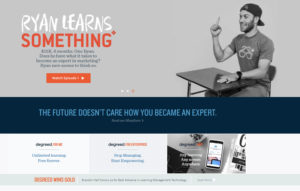 Edtech company Degreed is designed to track, evaluate and optimize learning activities for companies and their employees to improve how training and learning are served up and to deliver on the promise of lifelong learning. Their innovative approach to the LMS is echoed in the company’s serious thought leadership marketing activities.
Edtech company Degreed is designed to track, evaluate and optimize learning activities for companies and their employees to improve how training and learning are served up and to deliver on the promise of lifelong learning. Their innovative approach to the LMS is echoed in the company’s serious thought leadership marketing activities.
Degreed has established a powerful reputation with in-depth and readable white papers, such as Learning Is The New Work: Four Ways to Make Learning a Strategic Advantage. And Degreed’s surveys are the talk of the edtech world. More than one client or prospective client here has pointed us to the How The Workforce Learns In 2016 survey as an example of the thought leadership content they would like to produce. By producing free, downloadable and genuinely data-backed publications, Degreed had become a destination for people looking to better understand today’s edtech and workforce development landscape.
Burning Glass: labor market experts
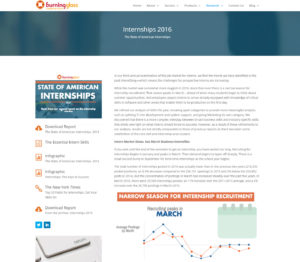 When the team at McGuire Editorial is producing white papers and other content for our clients, we typically turn to nonprofit and government sources like the Pew Charitable Trust or the Bureau of Labor Statistics. But there are a few for-profit sources of thought leadership content we know we can count on for terrific insights.
When the team at McGuire Editorial is producing white papers and other content for our clients, we typically turn to nonprofit and government sources like the Pew Charitable Trust or the Bureau of Labor Statistics. But there are a few for-profit sources of thought leadership content we know we can count on for terrific insights.
The latest reports and white papers at Burning Glass are something we always check for when we’re trying to understand what’s going on in the workforce. Burning Glass Technologies uses its enormous database to churn out high-quality job market analytics used by employers, workers, students and educators. Their trove of information and insights translates into a range of products, such as a labor insight dashboard and talent matching.
The company has emerged as thought leaders largely thanks to their library of excellent research reports. Downloadable reports identify and explore issues such as the internship market, where skills gaps lie, which industries are thriving, struggling or evolving and where the jobs are.
Northpass keeps it focused on business
 Great thought leadership should treat blog content like it’s as valuable as the most polished ebook. Northpass (f.k.a. SchoolKeep), a course authoring platform that Fortune 500 and growing SaaS companies use to train employees and external partners, and also a client of McGuire Editorial, does this really well by developing lots of original reporting.
Great thought leadership should treat blog content like it’s as valuable as the most polished ebook. Northpass (f.k.a. SchoolKeep), a course authoring platform that Fortune 500 and growing SaaS companies use to train employees and external partners, and also a client of McGuire Editorial, does this really well by developing lots of original reporting.
They use original interviews from industry experts, even when they are unaffiliated with the company, while keeping its own marketing message muted. In an article about what’s new in video for customer education, for example, experts from the video hosting service Wistia and the advertising agency Indiewhip discuss the latest production trends and share tips on creating engaging and effective instructional videos. This level of original reporting could stand alongside anything in the magazines at First Round Review.
Lately, Northpass has also been making excellent use of a resource center format to optimize their sales funnel by building up an inventory of blog posts, checklists, toolkits, frameworks, templates and ebooks. This is an excellent example of how thought leadership content results from steady consistent effort over a couple years. By the way, be sure to check out this thought leadership marketing case study looking at SchoolKeep’s results as of Fall 2016.
General Electric’s microsites approach to big ideas
 One way to tackle this difficult challenge that is becoming more common is the online magazine — often presented outside the company’s main website as a microsite — where thought leadership can flourish.
One way to tackle this difficult challenge that is becoming more common is the online magazine — often presented outside the company’s main website as a microsite — where thought leadership can flourish.
For example, who isn’t going to be captivated by a GIF of a beating heart and an article about a new way to transport donor hearts for transplant? Or a robot working as an infectious disease researcher? Or advice on packing for a space mission?
Those stories are on Txchnologist, a very simple Tumblr-based microsite “powered by GE” and filled with fascinating content that is as snackable and sharable as anything on Buzzfeed. They generate the content from multiple sources covering nine themes: Earth, Space, Material, Life & Nature, Energy, Building, Transportation, In Theory and Computers. All of these, of course, are areas where GE wants to remind potential B2B customers that they are innovators and have expertise.
So, according to their About page, Txchnologist offers “an optimistic, but not utopian, take on the future and humanity’s ability to tackle the great challenges of our era through industry, technology and ingenuity. We examine ideas that will shape societies, from the developing world to our frenetic and growing cities.”
Acrobatiq builds a library
 White papers and ebooks are another way to highlight thought leadership, by demonstrating your expertise to your target audience. These usually take a comprehensive look at a subject and are designed for some attentive reading time. They might be printed out by the reader or by the sales team when they’re meeting with customers, and they usually involve a designer to help the content make the maximum impression. One good example is the adaptive learning software company
White papers and ebooks are another way to highlight thought leadership, by demonstrating your expertise to your target audience. These usually take a comprehensive look at a subject and are designed for some attentive reading time. They might be printed out by the reader or by the sales team when they’re meeting with customers, and they usually involve a designer to help the content make the maximum impression. One good example is the adaptive learning software company
Acrobatiq, a client of McGuire Editorial, which is building up a comprehensive and evergreen library of readable white papers and case studies for administrators, faculty and instructional designers about the benefits of using educational technology and about other proven learning methods to improve educational outcomes.
Drew McLellan’s Build a Better Agency Podcast
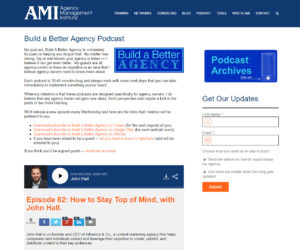 Those of us in the digital marketing world are bombarded with material from a few marquee names with huge followings. But most of that material is really for beginners, leaving the rest of us hungry for something more substantial. And then I stumbled on Drew McLellan, a longtime agency owner who has earned his stripes as a marketing thought leader and now is also a consultant, author and columnist. His blog, Drew’s Marketing Minute, is extremely popular.
Those of us in the digital marketing world are bombarded with material from a few marquee names with huge followings. But most of that material is really for beginners, leaving the rest of us hungry for something more substantial. And then I stumbled on Drew McLellan, a longtime agency owner who has earned his stripes as a marketing thought leader and now is also a consultant, author and columnist. His blog, Drew’s Marketing Minute, is extremely popular.
But McLellan offers irreplaceable value through his Build a Better Agency Podcast. As part of AMI — the Agency Management Institute — the Build a Better Agency podcast features guests with a wide variety of experiences and niches who ware battling it out in digital marketing and figuring out how to stay ahead of trends. Each 30-45 minutes episode wraps up with practical next steps listeners can take to apply the ideas discussed to their own agencies.
These discussions are also a good example of why the interview format podcast is generally so valuable for listeners. This format is much more likely to get past talking points and prepared messaging and into the real nitty-gritty. In other words, it’s much more likely to be authentically useful thought leadership content.
First Round lets you hear from the experts
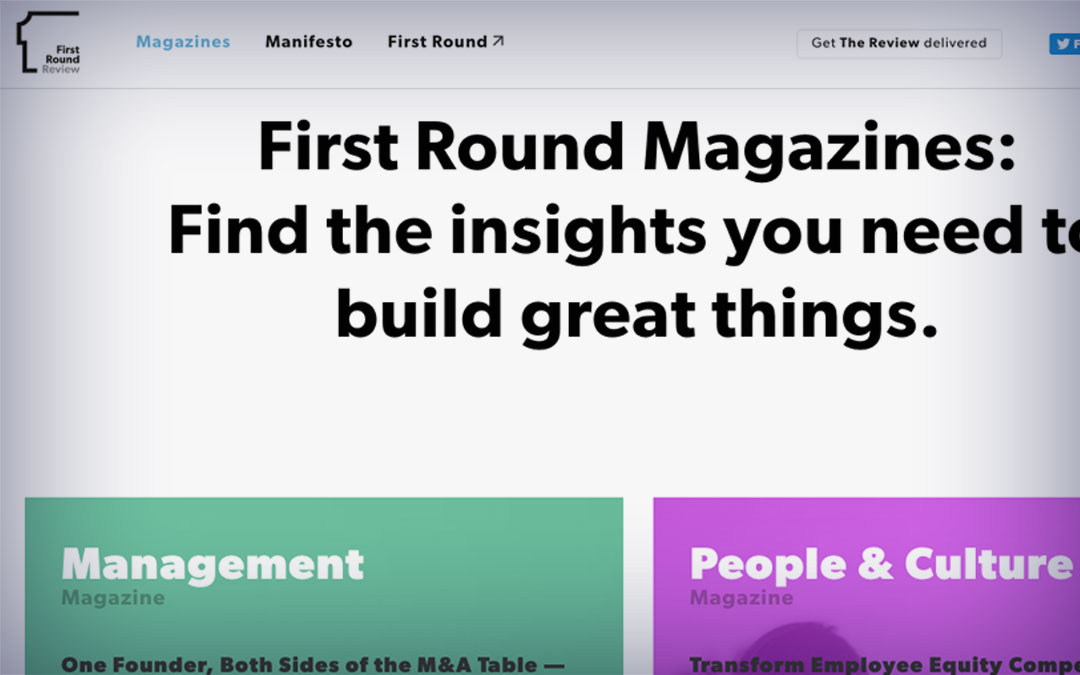 First Round Review employs a similar strategy by opening up its pages to other thought leaders. The manifesto of this longform content website proclaims: “We’ll get out of the way and let experts speak directly to you about what they believe is most important.” The site is actually organized into nine separate digital magazines developed by First Round Capital, a venture firm whose investments include some of the biggest new consumer brands like Uber and Warby Parker.
First Round Review employs a similar strategy by opening up its pages to other thought leaders. The manifesto of this longform content website proclaims: “We’ll get out of the way and let experts speak directly to you about what they believe is most important.” The site is actually organized into nine separate digital magazines developed by First Round Capital, a venture firm whose investments include some of the biggest new consumer brands like Uber and Warby Parker.
The firm operates from the idea that the VC model is broken and that they are innovating on it by fostering community among founders, funders and other entrepreneurs. To succeed, First Round Capital needs to grow the ecosystem and keep attracting the most innovative companies to them. After all, they want to be involved with the next Uber, too.
So they publish a wealth of extremely valuable information on First Round Review in topics like management, marketing, engineering, design and sales. The magazines provide hundreds of meaty articles for entrepreneurs about starting and growing their businesses. Launched in 2013 as a blog to showcase successful entrepreneurs, First Round Review has morphed into a first-rate publishing project.
Openview opens up the platform
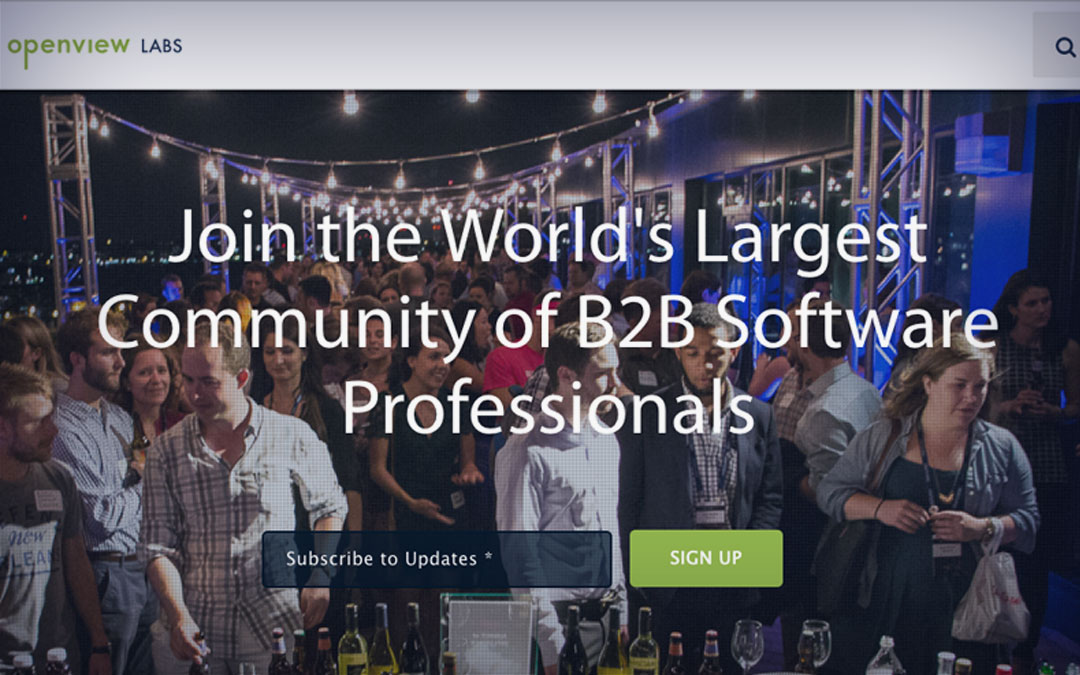 Openview Labs is another example of a publication from an investment firm, in this case Openview Venture Partners. This one, however, is “geared toward B2B expansion stage software companies.” It brings together founders and other experts to help SaaS companies find product-market fit, generate demand and develop their organizational structures.
Openview Labs is another example of a publication from an investment firm, in this case Openview Venture Partners. This one, however, is “geared toward B2B expansion stage software companies.” It brings together founders and other experts to help SaaS companies find product-market fit, generate demand and develop their organizational structures.
Some of the guests it has published include the biggest names in SaaS and entrepreneurship offering insight on “product development, customer success, sales, marketing, finance and operations, HR and recruiting, exit strategy and so much more.” The HR & People category, for example, covers hiring, compensation and benefits, team development, retention, leadership, management and culture.
Openview Labs also offers free ebooks, which can be downloaded. Among the titles are “Buyer Insights Research” and “The Executive’s Quick Guide to Scrum.”
Pipedrive helps build sales skills
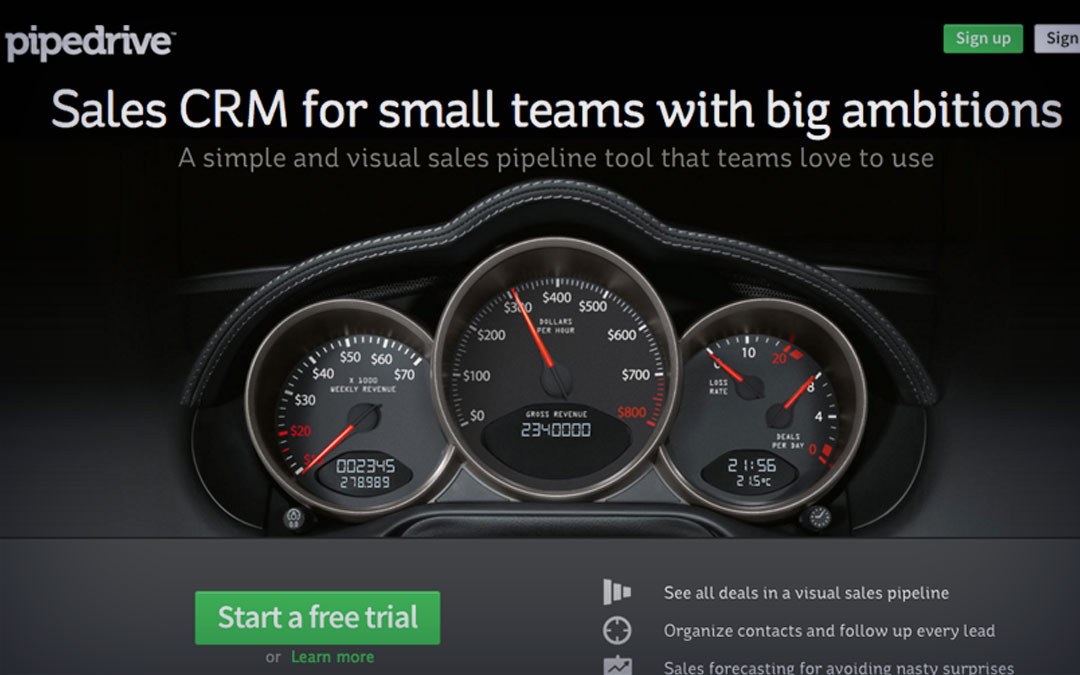 The most effective approach to content marketing is to start by being helpful. (For more on this philosophy, check out Give, And It Shall Be Given To You: A Definition of Content Marketing Based On What You Can Do For Others.) So educating others in a way that helps solve their problems is the most reliable approach, especially if you do it consistently. It doesn’t always have to be through a major content asset or a microsite.
The most effective approach to content marketing is to start by being helpful. (For more on this philosophy, check out Give, And It Shall Be Given To You: A Definition of Content Marketing Based On What You Can Do For Others.) So educating others in a way that helps solve their problems is the most reliable approach, especially if you do it consistently. It doesn’t always have to be through a major content asset or a microsite.
The CRM software company Pipedrive excels at using its blog to publish a consistent stream of highly valuable advice to educate their customers. By posting dozens of useful and provocative articles about the sales industry, they provide act-on-it-now advice for small businesses. Recent entries include “Reporting You can Use to Actively Drive Sales” and “Five Ways to Hack Sales Psychology and Sell Better.”
Autodesk educates the market on a new product category
 Sometimes instead of selling a better version of a familiar product category, a company is selling something their target market may not know about or understand yet. In that case, educating the market in general is one way for the company to nudge ahead of competitors and gain momentum. Autodesk’s Redshift (formerly known as Line//Shape//Space) is a stellar example of this.
Sometimes instead of selling a better version of a familiar product category, a company is selling something their target market may not know about or understand yet. In that case, educating the market in general is one way for the company to nudge ahead of competitors and gain momentum. Autodesk’s Redshift (formerly known as Line//Shape//Space) is a stellar example of this.
The maker of software for 3D design and engineering is selling products into a fast-growing new space with new users who are just developing their interest and expertise. Educating and inspiring those users about the possibilities of 3D design is critical for Autodesk’s success over the long term. So Redshift aims “to help and inspire businesses in the design and drafting space.” Initially targeting small businesses, Redshift now has a goal of exploring and leading conversations about “the future of making things.”
Among the recent articles are “How Civil Engineers and Urban Resilience Are Protecting Civilization Against Future Superstorms,” “Farming Without Fields: 3 Innovative Uses of Agricultural Engineering” and “Minecraft Architecture: What Architects Can Learn from a Video Game.”
Related reading: I discuss Redshift in greater length on Convince & Convert in 4 Go-To Types of Educational Content for B2B Brands.
Seven takeaways for thought leadership content marketing
What all these content projects have in common is how skillfully they link thought leadership with their overall goals. As a result, they are breaking through the clutter with consequential material that fires the imagination and that turns their sites into destinations for repeat visitors. Consider these key takeaways when we look at them collectively:
- Examine and explore. Thought leadership content marketing starts with thinking, which is rarely a straight line process.
- Get out of the way and let the experts speak. Sponsoring thought leadership content can be as effective as leading a conversation.
- Help your partners and customers learn.
- Help your partners and customers grow.
- Celebrate success . . . and show how it happened.
- Educate the market on the emerging trends and opportunities.
Lastly, number 7 is to remember that the distribution channel isn’t what’s important to thought leadership content. For some projects, blogs are as effective as splashy books, videos or podcasts.
When brands are committed to providing more than the same old clickbait but truly helping their customers — and potential customers — then content will be an effective tool for growing the business.

Robert McGuire
Owner
I have a vision of a content marketing agency that consistently produces standout material aligned with my clients’ business goals.



